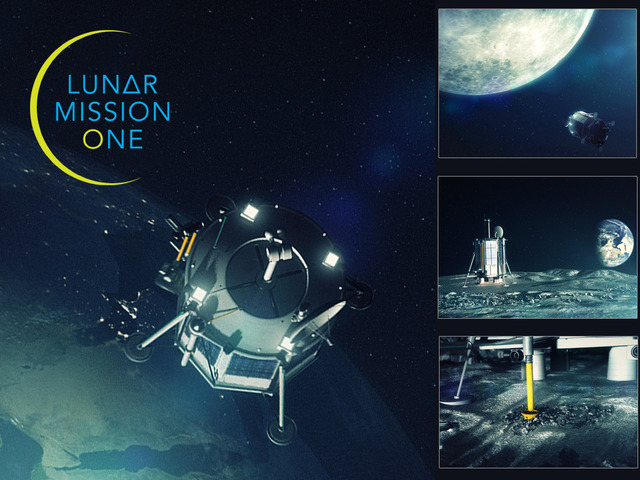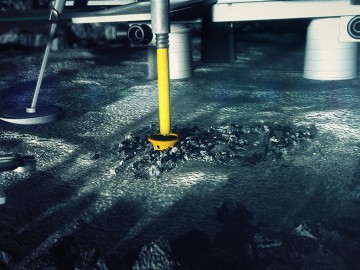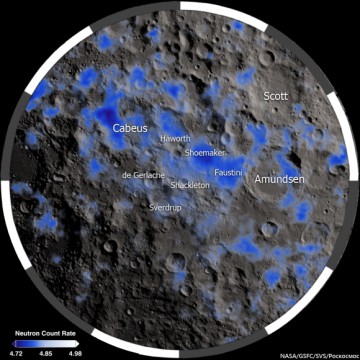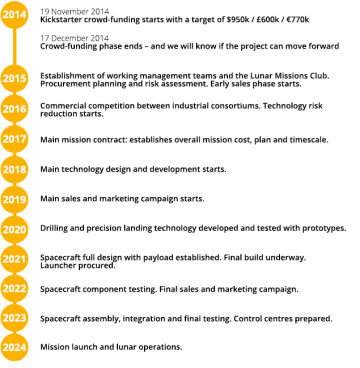
The act of putting important information in written form inside sealed containers and have them thrown into the sea in the hopes of them eventually being recovered by someone on a distant shore has been a time-honored maritime tradition since the time of the Ancient Greeks. With the advent of the Space Age during the mid-20th century, this long-standing tradition has also been an integral part, albeit in a new form, of man’s exploratory efforts of the new ocean of space. Some of the most well-known examples include the gold-anodized aluminium plaques that were placed on board NASA’s twin Pioneer 10 and 11 spacecraft, as well as the gold-plated copper phonograph records onboard Voyager 1 and 2, which were launched on an outward trajectory from our Solar System while containing recorded greetings and detailed information about Earth and its occupants in the hopes of being intercepted by an extraterrestrial civilisation elsewhere in the galaxy sometime in the distant future.
Similar “time capsules,” containing the names of hundreds of thousands of people around the world, have also been launched into space in recent decades, stored inside the memory chips of dozens of robotic interplanetary spacecraft that have been exploring various parts of the Solar System, like NASA’s Deep Impact, Phoenix, Dawn, New Horizons, MAVEN, and the Japanese Space Agency’s Hayabusa and Akatsuki spacecraft, just to name a few. Much closer to home, a miniature silicon disc containing the goodwill messages of a total of 73 nation leaders rests at a place on the Moon called the Sea of Tranquility, perched on one of the legs of the lunar module “Eagle,” which transported the first humans to the lunar surface during the Apollo 11 mission in 1969. Forty-five years after this monumental event in human history, a new privately led initiative aims to take the next “small step” in lunar exploration, by landing a robotic science mission on the Moon’s south pole within the next 10 years, while inviting the general public to contribute and participate in the whole process by sending their own personalised “time capsules” on our nearest celestial neighbor.

The ambitious project, called “Lunar Mission One,” was unveiled by a team of scientists, engineers, entrepreneurs, and academics on Nov. 19 at the 12th annual Reinventing Space Conference in London, which was organised by the British Interplanetary Society. Originally conceived in 2007, “Lunar Mission One” is the brainchild of David Iron, founder of Lunar Missions Ltd and the Lunar Missions Trust, a nonprofit organisation with the purpose of advancing education and research in space science and technology. Described by the project’s team as “the most inspirational mission to the Moon since the Apollo landings,” Lunar Mission One calls for the landing of a robotic spacecraft on the Moon’s 2,500 km-wide South Pole–Aitken basin by 2024, in order to drill down to a depth of at least 20 meters and analyze core samples from the Moon’s interior to determine their isotopic composition, allowing scientists to answer some fundamental, long-held questions regarding the origin and evolution of our nearest celestial neighbor. “By going below the surface, we will access lunar rock that dates back up to 4.5 billion years to discover the geological composition of the Moon, the ancient relationship that shares with the Earth and the effects of early asteroid bombardment,” said Iron during the project’s announcement. “Ultimately, the project will improve scientific understanding of the early Solar System, the formation of our planet and its Moon and the conditions that initiated life on Earth.”
The exploration of the Moon’s South Pole–Aitken basin, which constitutes one of the largest impact basins in the entire Solar System, has been a major scientific priority for space agencies worldwide ever since it was confirmed that the bottoms of dozens of permanently shadowed craters around the lunar south polar region were covered by huge amounts of water ice deposits and possibly even organic material similar to what have been observed on Mercury as well. Besides its immense importance to our scientific understanding of the Moon itself, the game-changing discovery of water ice on our natural satellite may ultimately turn out to be key for enabling a sustained human presence on the lunar surface, by providing future astronauts with the means to create in situ plentiful of critical resources like water, oxygen, and rocket fuel, thus allowing our species to truly become a space-faring civilisation. In addition to studying interior of the Moon, one of the goals of Lunar Mission One is to measure the surface radiation environment around the lunar south polar regions. Such direct radiation measurements would allow scientists and mission planners to better assess the human health risks posed by the flux of cosmic and solar radiation that constantly strikes the lunar surface from every direction, while potentially leading to the design of better shielding techniques for future lunar explorers. “What are the origins of the Moon? How did the Late Heavy Bombardment shaped the history of our own planet? Is the Moon suitable for a permanent manned base for space exploration? These are few of the questions that the mission will seek to help us answer,” explained Iron during the conference. “This is a science-led mission,” added Professor Richard Holdaway, Director of RAL Space and the project’s technical advisor. “It’s doing other things as well, but it is science-led. It’s about asking and answering some of the imponderable questions for the very first and final time with a 100 percent certainty, rather than 95 percent certainty.”

Despite being a novel and challenging undertaking, the team behind Lunar Mission One aims to finance the project mainly through private donations from the public during a three-phase funding process. The first phase of the project, which will last until 2017, began at the same day of its announcement, with the launch of a month-long crowdfunding campaign on Kickstarter with the aim of raising at least £600,000 ($940,000) until Dec. 18. It’s interesting to note that during the first eight days of the crowdfunding campaign, the project has already raised more than half of the amount pledged. If the campaign turns out to be successful, the money will be used to fund the project’s early project management and program planning stages. “The current phase carries on for a period of a couple of years, while we do the next stage of the mission’s Phase-A design,” explained Holdaway. “It’s the real beginnings of the detailed design and at the same time understanding and de-risking the major technology risks.”
As is the nature of crowdfunded projects, according to the amount of money pledged backers will be entitled to a set of different rewards. Central among these is the opportunity to reserve, by pledging £60 ($94) or more, a Digital Memory Box in a time capsule that will be placed inside the 5 cm-wide bore hole that Lunar Mission One will drill on the lunar surface. Backers will be free to use their own digital “space” to upload any kind of data they wish, while also being offered with the alternative option of reserving physical space in the time capsule in order to send a piece of their own DNA to the Moon. “People will be able to upload any kind of information they want into their personal memory boxes,” explained Iron. “Statements, messages, photos, audio, video, with the option of a strand of hair.” In addition to this private archive of digital memory boxes, Lunar Mission One will feature a public one containing records of the Earth’s entire biosphere as well as the history of our species, which will be open and freely available to everyone. “Together these two archives make up a 21st century ‘time capsule’ that we will bury on the bore hole below the surface of the Moon, as part of ‘Lunar Mission One’,” said Iron. According to the project’s time schedule, the projected revenue from the sales of millions of such private Digital Memory Boxes as part of large-scale marketing campaign that will take place during the project’s second phase due to begin in 2018, will also help to fund Lunar Mission One to completion.
Besides providing a better scientific understanding about the Moon itself, one of the main goals of Lunar Mission One is to inspire and educate students and school children around the globe about the value of science, engineering, and space exploration. To that end, the project’s team is planning to launch a worldwide education program in schools and universities around the world in partnership with various academic institutions in the UK, like the Institute of Education and the Open University, in order to engage students in the STEM fields (science, technology, engineering, and mathematics). “One of the really important issues of the project is its inspiring side,” commented Holdaway during the conference. “We need to inspire our children to get more involved and understanding of science and technology and there’s no better way of doing that than the with the space program … This is a truly global program and we want to engage children and adults alike, to encourage them again to understand and enjoy science and technology and particularly the space program better.”

The team behind Lunar Mission One has already partnered with RAL Space, which will provide technical advise during the first phase of the project. A world-renowned space research and development facility in the UK, RAL Space has had a significant involvement in the development of over 200 space missions throughout the years, including the joint NASA/ESA Hubble Space Telescope and the Cassini/Huygens mission, Mars Express, Swift, Ulysses, Venus Express, Giotto, the ongoing Rosetta/Philae mission to the comet 67P/Churyumov–Gerasimenko, and the Indian lunar mission Chandrayaan-1 just to name a few. In addition to its board of advisors, Lunar Mission One has been endorsed by many prominent, world-renowned figures from the scientific community, including Brian Cox, Stephen Hawking, Lord Martin Rees, Jim Al-Khalili, and Ian Crawford. “If we’re going to explore space, and I think we have to, then the Moon is the obvious stepping stone, it’s the easiest place to land and build a base,” says Cox in the project’s introductory video on Kickstarter. “Everyone can play a part directly in the funding, they can know that they have given this money, and that money is going to go into the technology which is going to land on the Moon and do the science … But the key thing to me is that everybody can say ‘I think we should explore space, I want to increase the sum total of human knowledge and to know how the Solar System formed, it’s important so I’m going to do something about it’.”
Our nearest celestial neighbor in space holds many secrets which are just waiting to be uncovered, promising untold opportunities and wealth, both financial and intellectual as a reward. There are many different reasons why the Moon should be the next frontier for human and robotic explorers alike. Maybe the time has come when crowdfunded projects like “Lunar Mission One” can indeed play an important part in this endeavor by providing the answers to some of our most basic questions about our natural satellite, ultimately getting as one step closer toward returning there.
For more information about “Lunar Mission One,” you can visit the project’s webpage and social media pages on Facebook and Twitter.
Want to keep up-to-date with all things space? Be sure to “Like” AmericaSpace on Facebook and follow us on Twitter: @AmericaSpace



